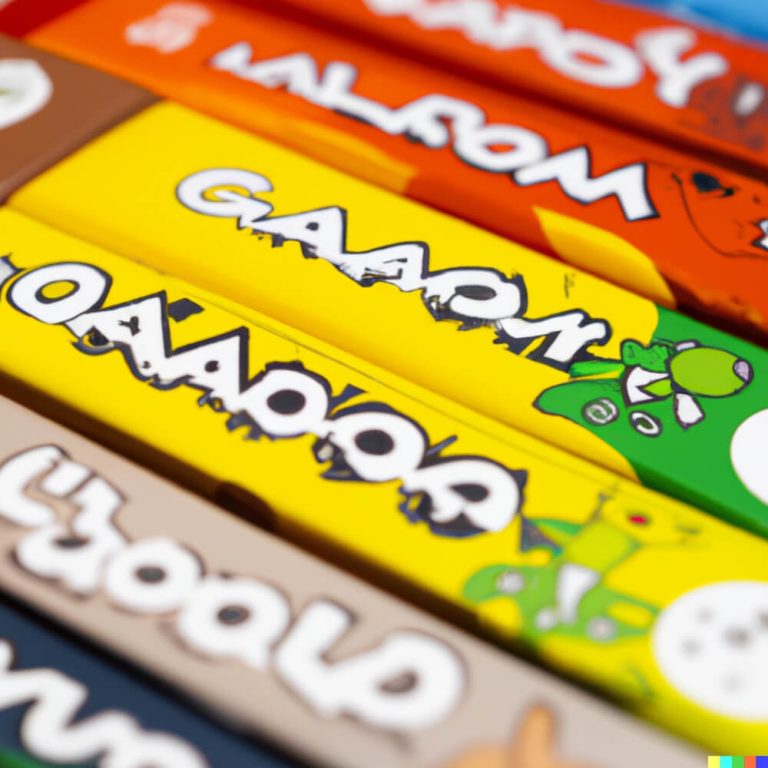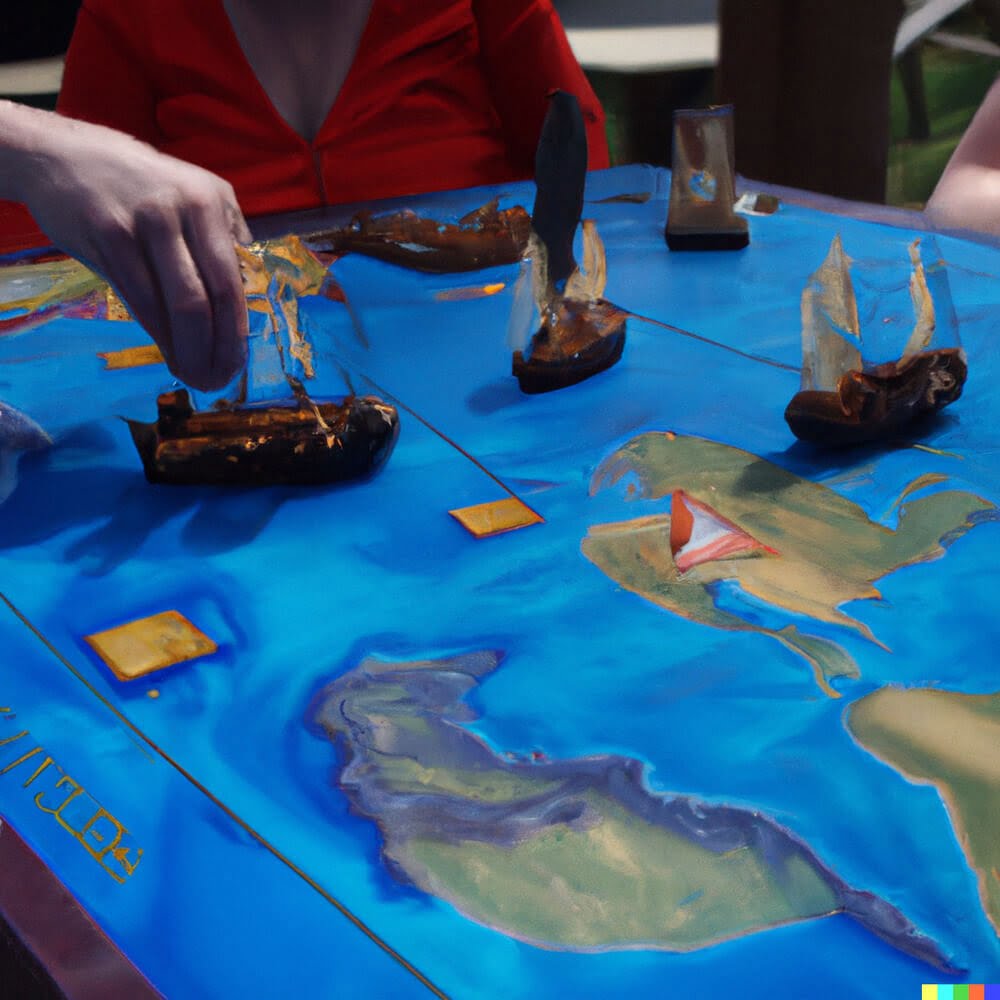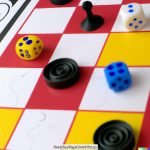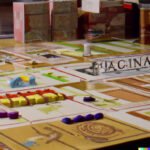Introduction
During the Great Depression, board games became even more popular than ever before. This was due to the fact that they were cheap and families could play them instead of paying for other entertainment. Traditional board games such as checkers or chess were favorites, while new fads like Monopoly or Scrabble also gained traction during this time period. Board games not only provided hours of fun but went a long way to bringing families together and providing a sense of comfort in a tumultuous time.
Examples of Popular Board Games – Checkers and Chess
Checkers and chess are timeless classics that have been around since ancient times and were very popular during the Great Depression. The simple rules make these types of games easy to learn and understand for all ages, allowing more family members to take part in the action. Checkers requires tactical maneuvering within an 8×8 grid whilst capturing pieces from one another until defeat is achieved whereas Chess utilises complex strategy on an adjustable 8×8 board with different possible move sets for an array of pieces on both sides. As these game require no additional components beyond their boards, they had an obvious appeal in the 1930s when luxuries such as artificial board game pieces were rare or impossible to purchase for many households.
Other Popular Games – Monopoly and Scrabble
In addition to traditional board games, two modern day classics made their debut during the Great Depression: Monopoly (1933) and Scrabble (1938). Both games allow participants to use money-handling skills or strategy built on words seen in everyday life, giving players the opportunity to understand commercial principles while having fun at the same time. Another advantage these board games offered was extended engagement ” most sessions lasted over several hours so it quickly became a popular choice among friends or family groups looking for extra entertainment during tough economic times. In addition, both of these options could be played by two people which meant that someone else did not need to be asked over in order for families to enjoy togetherness fun through strategic competition.
How Board Games Were Viewed During Hard Times
The Great Depression had a great impact on people’s social lives. Since many people were dealing with economic hardship, they looked for inexpensive activities to pass the time and keep their minds occupied. Board games became a popular form of entertainment during these hard times. People found solace in spending time with family and friends by playing classic board games like Monopoly, Chess, and Checkers. Board games provided an affordable way to have fun as people could play for hours without ever having to invest any money.
Board games also served as an important tool for bonding during the difficult period of the Great Depression. Communities would hold game nights at local churches or community centers where people could gather and play popular board games together in a judgment-free space. Through playing the game together, community members were able to build meaningful relationships that would help them even after the crisis passed. Playing board games also helped families stay connected with each other during this trying time. As millions struggled to make ends meet, board games allowed them to enjoy moments of normality that reminded them of life before the Great Depression.
Financial Constraints of Board Games
The Great Depression was a dark time for many families, who lived under the constant fear of poverty and sometimes lacked basic necessities. But this did not mean that board games could not still be enjoyed by families during this time period.
When depression-era people had money to spend, they often chose to buy less expensive forms of entertainment and leisure, such as board games. These games provided an economical form of entertainment for children and adults alike. However, due to financial constraints, fewer people bought more luxurious items like parlor games during this time period. Instead of focusing on purchasing new board games, people reused older ones and reworked them to provide new challenges. People found creative ways to make the same game exciting by making different rules or incorporating traditional family storytelling into the game play. They also shared ideas with each other and discussed strategies which students still use to date in modern-day versions of classic board games.
Families who were unable to purchase new board game sets created their own with handmade pieces such as cardboard cards or everyday items found around their homes. Such games included Checkers, Mahjong, Snakes & Ladders and even Chess, all commonly played using household goods as pieces on homemade boards crafted from scraps of newspaper or fabric scraps from sewing kits held together with a glue stick or some kind of adhesive tape. These makeshift board sets allowed families to enjoy playing while also frugally entertaining themselves.
Boards games became an integral part of families’ life during the Great Depression since they diverted attention away from financial problems among other issues and allowed them to focus on something else away from it all in a much welcome respite than can only be achieved by playing together as a family group activity and ultimately bringing joy back into their lives amidst hardship brought upon them by difficult circumstances beyond their control in that moment in history
Most Popular Board Games of the Time
During the Great Depression, board games provided a form of entertainment for Americans who suffered from unemployment. The four most popular board games of the time were Monopoly, Scrabble, Rook, and Parcheesi.
Monopoly was created in 1933 by Charles Darrow and quickly became an iconic game that is still beloved today. It serves as an allegory of pre-Depression capitalist society where players can buy properties, hotels, and make investments while competing with other players.
Scrabble has been around since 1931 when it was created by James Brunot. This classic word game allows two to four players to place tiles on a crossword grid in order to form words and earn points which are totted up at the end of each round.
Rook was first printed in 1906 as a response to card-games such as Bridge that had gained popularity during the 20th century. It remains popular today due to its combination of luck and skill in forming “melds” which are similar to poker hands and can be used for scoring points.
Parcheesi has been around since 500BC making it one of the oldest known race games from India which was first published by Sears in 1928 and sold throughout the 1930s as family entertainment through America’s stores like Kresge 5 & 10 Cent Store. Players use dice rolls to move pieces around a specially designed board, trying to get all their pieces ‘home’ before their opponent does so as to win the game.
Innovative Ways to Play Board Games
During the Great Depression, playing board games was just as popular as it is today. With people’s limited access to money and technology, children, adults, and families had to find ways to make do with very few resources. Fortunately, there were several creative ways to adapt classic board games from the era into something enjoyable for large groups of people.
One of the most popular variations involved using strings, newspapers and other items from around the house to create a makeshift gameboard. The gameboard could be drawn on the floor with chalk or pieces of paper, and players would use string or straws as tokens for their pieces. This adaptation allowed multiple generations of family members to play together without having to purchase an expensive set.
Another interesting adaptation of classic board games during the Great Depression was playing them in teams outside with long sticks as both venues and pieces. Family members could use sticks found outside in either public parks or family yards and form teams divided by color or number while they called out which side they had won when they got all five in a row. This version often increased camaraderie among family members since it required more skill than luck at succeeding in this type of variation.
Classic card games such as War also proved popular with children during this time period due to its fast-paced nature and lack of props needed for purchase. People at home often made do with what little resources they had utilizing loose papers and books instead of investing in tangible gaming cards which was difficult given their financial situation post economic downturns such as that one seen during the Great Depression era.
Finally, groups could gather around pencils that were laid on top of newspapers spread across tables making numbers or traditional classics like Hangman easier to play while all participants were engaged watchfully paying attention so nobody cheated themselves out of following every rule correctly mid-gameplay! This exciting thoughtful activity marketed a competitive fun atmosphere allowing family members who weren’t able financially invest in many expensive board game options feel included regardless!
Social Significance of Board Games
During the Great Depression, many people lived in a state of poverty and social isolation. In order to combat the loneliness that accompanied this era, board games served as a source of entertainment and a way for people to feel connected. Those who could afford it often gathered to play card or board games such as Monopoly, Checkers, Chess and Scrabble. Game nights provided an outlet for family members or neighbors to express themselves and connect with others. The face-to-face interaction that came from playing these games was essential for many during this time of hardship, when regular social interactions were often few and far between.
For those who had families or were able to maintain their jobs during the depression, participating in game nights offered emotional relief from their financial worries. Board games presented an emotional reprieve ” it provided an opportunity for players of all ages to get lost in another world with friends or family members, at least temporarily forgetting about the perils of the depression outside their doorsteps. Many used these activities to unify households and bring much needed joy into otherwise lonely lives. They created a virtual bridge between adults struggling to make ends meet while children were able to be children again ” if only briefly ” despite living through a most trying period in our nation’s history.
How the Great Depression Changed the Way We Play Games
The Great Depression was a difficult time for many Americans, as it drastically changed their entire living situation. While much of the population struggled to feed themselves, find housing, and stay afloat financially, there was a growing need for low-cost entertainment. As a result, board games exploded in popularity during this time period.
Though some major game companies like Parker Brothers still sold games such as Monopoly and Risk during the Great Depression, many homespun games were created by people to pass the time and remain entertained. These handmade games required little more than paper and a pencil, sometimes limited to only guessing what came next on television shows or singing together around the warm fireplaces found in many homes. People would also create puzzles from newspapers or magazines retrieved from the local library.
With limited funds available during this era, family entertainment had to come from creative sources. Those with financial means could purchase traditional board and card games; however, others without money to spare resorted to fast-thinking skills in an attempt to make their own entertaining activities out of recycled materials at home. Popular handmade pastimes included homemade cards with new rules added or dominoes arranged into various configurations in order to create new challenges, such as crossword puzzles or shipwrecks using items found around the house like tacks or buttons.
Board games not only provided an outlet of joyfulness but also connected families experiencing hard times despite the distance between them within their household walls. Living through the depression meant boarding up windows against cold winter winds and sitting closer together; so when it came time for family fun, everyone gathered around a game table where joyous laughter replaced worry about joblessness and poverty regulations that plagued everyone during those dark years.
Conclusion
Board games during the Great Depression provided an engaging and oftentimes entertaining diversion from the grinding monotony of poverty and misery that plagued so many Americans. Whether played in the home, at church, or in a dancehall, board games provided much needed moments of escapism for those struggling to make ends meet. Furthermore, since these board games demanded few resources beyond an ability to count and keep track of items, families were able to stay connected even when difficult times set them far apart. Board games during this era created a meaningful way for people to enjoy each other’s company without worrying about what was going on outside their door. Although it can’t be said that these enjoyable activities brought any real relief from the trauma of this dark period in American history, it is clear that playing board games helped bring some joy back into people’s lives.

I love playing all kinds of games – from classics like Monopoly to modern favourites like Ticket to Ride.
I created this blog as a way to share my love of board games with others, and provide information on the latest releases and news in the industry.





